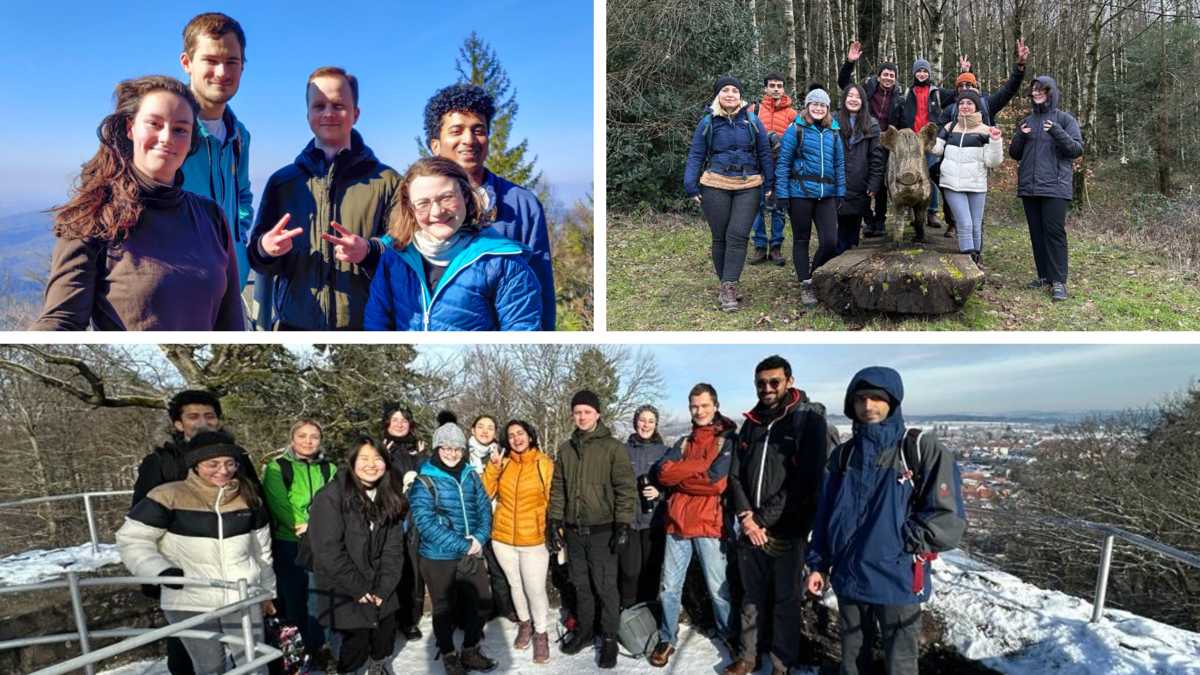
Hiking course for international students a complete success
-
Autor:
Mareike Schroeter
- Datum: 03.04.2024
-
When I am asked on Thursdays what kind of hike is planned for Sunday and when we are meeting for the tour, my fellow hikers are very motivated, but above all they are curious about the Black Forest and the Germans' favorite leisure activity, namely hiking. In Germany, hiking is popular with young and old alike, but in other countries and cultures, leisurely walking in nature and with sturdy footwear is the exception rather than the rule. In order to introduce the international community at the Karlsruhe Institute of Technology to hiking, I launched the pilot project "Hiking for international students" together with the University Sports Department and the International Buddy Program (headed by Annette Seiter). A complete success! The new project started this winter semester and will enter the next round next summer.
We will meet for the first time on 15.11.2023 for the technical introduction. Before I go into detail, I'm interested to know where the international students come from and whether they have any hiking experience. The people interested in hiking come from Uruguay, India, Pakistan, Turkey and Kazakhstan, among other places - a diverse group, so I'm excited. I tell them that hiking is more than just a sport for me, it's about actively experiencing something with all your senses and about the social component. Goethe once said: "Only where you have been on foot have you really been." Then it's time to get down to business: I present the packing list for a day hike in the Black Forest and emphasize that ankle-high hiking boots with a tread are the be-all and end-all. I say something about the right clothing and the optimal hiking diet, that we will burn a lot of calories and how best to pack your rucksack, heavy things at the bottom, light things at the top, energy bars are packed last so that they are always ready to hand. Also on the agenda is information on physical and mental fitness and your own limits as well as the limits of hiking in a group. My advice to international students is never to set off alone, especially when you're in unfamiliar territory - and it's much more fun in pairs or in a group anyway! The last slides are about maps, practical hiking apps, the weather and essential weather apps. Some students still need to get some good hiking boots, but the enthusiasm for social sports seems to be awakened.
The pilot project consists of the technical introduction described above, a workshop on the Black Forest and three hiking dates. So we'll see you again in December 2023 for the workshop. In a learning circle with seven stations, the students acquire knowledge on very different topics relating to the Black Forest, its cultural heritage and its unique flora and fauna. I have selected exciting texts and short videos on topics such as the Bollenhut, the cuckoo clock, the popular Black Forest gateau, which is of course also well-known among international students, carnival in Rottweil and some traditional professions that still exist, such as mask carving, traditional costume tailoring and glass blowing. There is also a station with an entertaining documentary about lesser-known myths and legends in the Black Forest. To give the students a first impression of the Westweg - the oldest, 285km long-distance hiking trail in the Black Forest - we watch an excerpt from the nature documentary WildWestweg (2023). The Westweg leads from Pforzheim across Germany's largest and highest low mountain range to Basel in Switzerland. Experienced hikers reach their destination after 12 stages. We will take it a little easier on the three hiking dates and approach it slowly.
On a freezing cold Sunday morning in January, we meet at the Albtal train station to travel to Langensteinbach St. Barbara. The first, somewhat easier hike in the snow is planned there. The atmosphere is good, the international students are very happy about the snow in the forest and the good weather. We complete a good 9 km route and then take a lunch break at the St. Barbara ruins - a successful day. The second hike takes us from the valley station to the Merkur, Baden-Baden's local mountain. We make good time and reach the summit after around three hours. There's a lot of wind on the tower, but it's worth the climb - not only do we enjoy the wonderful view, but we also reward ourselves with a large slice of Black Forest gateau in the Merkur Stüble. The Merkur cable car takes us back down into the valley. From there, we take the bus and make a short stop in front of the Caracalla Therme, named after Emperor Caracalla, who had the Roman bathing and spa facilities built at the naturally hot thermal springs extended around 200 AD. After another detour to the casino and the Trinkhalle, we return to Karlsruhe. In sunny but still cold spring weather, we hike up the amber rock above Bad Herrenalb in the Alb valley on the third hiking date. Once at the top, we are rewarded with a breathtaking view of Merkur and Fremersberg, and on a clear day we can also see the Murg valley and the Rhine plain. After a short lunch break, we descend again on the shadier and much cooler side of the Mauzenberg. Some students enjoyed the course so much that they want to lace up their hiking boots again next semester!
I'm delighted that the project is going into its second round!
